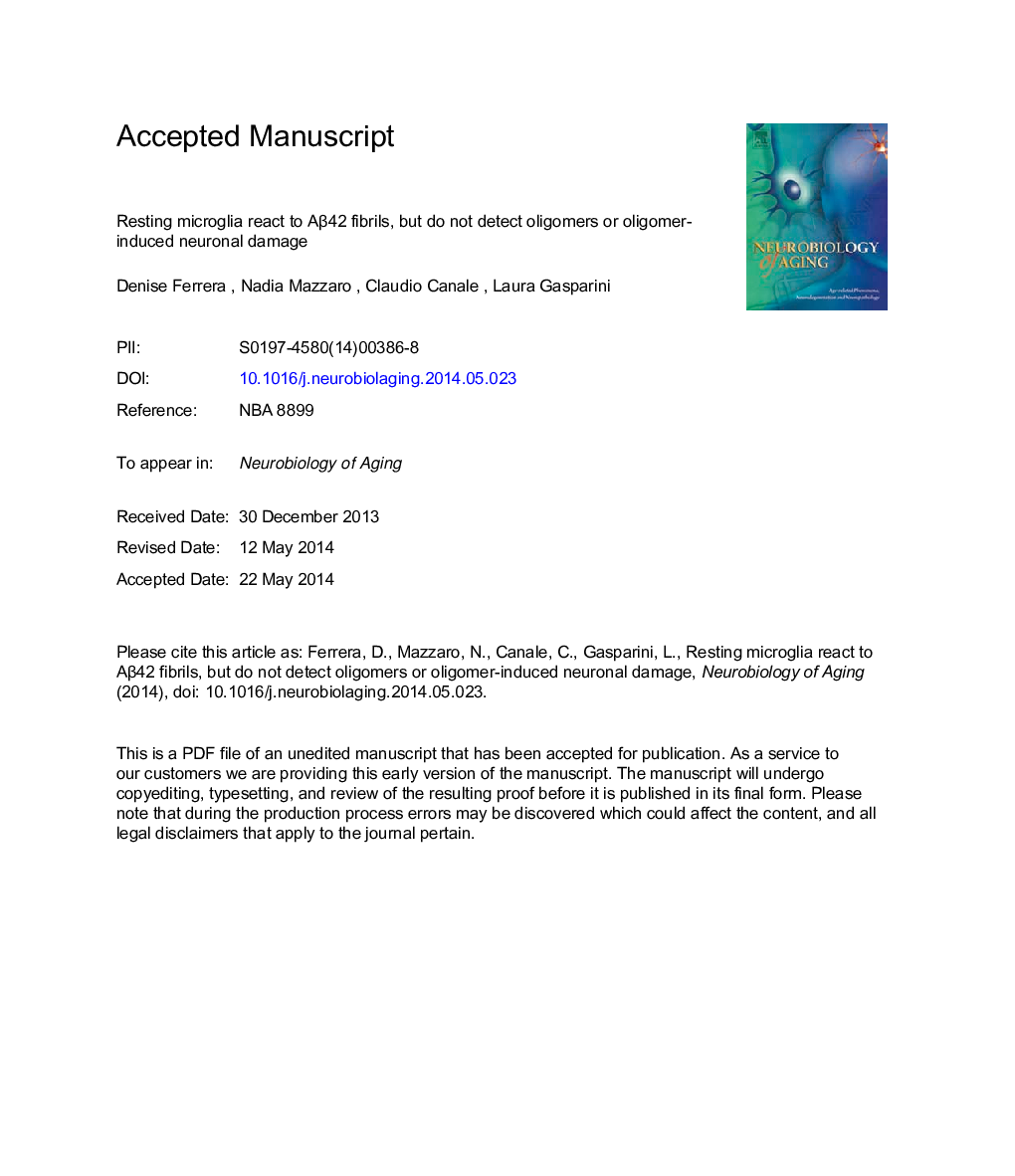| کد مقاله | کد نشریه | سال انتشار | مقاله انگلیسی | نسخه تمام متن |
|---|---|---|---|---|
| 6805363 | 1433563 | 2014 | 47 صفحه PDF | دانلود رایگان |
عنوان انگلیسی مقاله ISI
Resting microglia react to Aβ42 fibrils but do not detect oligomers or oligomer-induced neuronal damage
دانلود مقاله + سفارش ترجمه
دانلود مقاله ISI انگلیسی
رایگان برای ایرانیان
موضوعات مرتبط
علوم زیستی و بیوفناوری
بیوشیمی، ژنتیک و زیست شناسی مولکولی
سالمندی
پیش نمایش صفحه اول مقاله

چکیده انگلیسی
In Alzheimer's disease (AD), amyloid-β (Aβ) deposits accumulate in the brain parenchyma and contain fibrils of aggregated heterogeneous Aβ peptides. In addition to fibrils, Aβ aggregates into stable soluble species (termed Aβ oligomers), which are increasingly viewed as the key drivers of early neurodegenerative events in AD. Aβ aggregates stimulate microglia recruitment and activation. In the AD brain, microglia surround Aβ deposits, activate, and abnormally produce inflammatory mediators, contributing to AD pathogenesis. However, it remains unclear to which of the conformationally diverse Aβ species microglia specifically react. Here, we explore the “sensor” capability of murine microglia. We examine whether they can detect and discriminate the toxic Aβ oligomers, Aβ fibrils, and Aβ-induced neuronal damage and investigate whether they are activated by diverse human Aβ species cell autonomously or through neuron-derived factors. We find that, on aggregation in vitro, Aβ42 peptides form stable oligomers and fibrils, which are neurotoxic and trigger dendritic spine loss in mature primary mouse hippocampal neurons. Further, in resting primary murine microglia, Aβ42 fibrils induce a pattern of expression of inflammatory genes typical of the classical inflammatory response induced by infectious agents (e.g., the bacterial toxin lipopolysaccharide). Conversely, Aβ42 oligomers never elicit a microglia inflammatory response, whether applied alone, in combination with neuron-derived secreted factors, or in contact with neurons. Thus, microglia strongly react to Aβ42 fibrils, but do not sense Aβ oligomers or oligomer-induced neuronal damage. This suggests that early neurotoxic species can escape detection by microglia, leading to the chronic unfolding of amyloid pathology in AD.
ناشر
Database: Elsevier - ScienceDirect (ساینس دایرکت)
Journal: Neurobiology of Aging - Volume 35, Issue 11, November 2014, Pages 2444-2457
Journal: Neurobiology of Aging - Volume 35, Issue 11, November 2014, Pages 2444-2457
نویسندگان
Denise Ferrera, Nadia Mazzaro, Claudio Canale, Laura Gasparini,